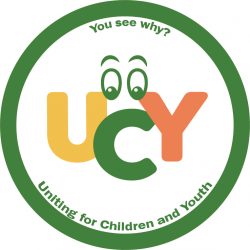The Task at Hand – Shifting Paradigms
To help put paradigm shifts into perspective consider this example of the adoption of germ theory provided by Don Berg. Thomas Kuhn coined the term “paradigm shift” and one of his observations was that dominant paradigms do what they can to keep contenders at bay. The Two Loops Model video provides a good brief summary of what a shift involves. People participating in RCE Making Change Stick are well aware of the learning paradigm based on self-determination and they want it to be made conveniently available to all young learners.
With what Thomas Kuhn observed about paradigm shifts, we should not be stumbling through the adoption of a new paradigm for education. There is plenty of evidence that conventional schooling does fundamentally flawed and that self-determination/agency/autonomy is a major missing ingredient. We might consider adopting Don Berg’s term “catalytic pedagogy” as the way to describe the self-determination approach to learning. It could help to overcome people’s preconceived ideas about self-directed learning and democratic education. If mainstream educators are to follow their own advice and learn from history, then they will at least entertain the thought that their cherished views might be flawed and that a promising new paradigm needs to be put on an equal footing with the old in the pursuit of its normal science.
The people who have registered for RCE Making Change Stick are aware of the education paradigm based on self-determination. The task at hand is to determine what we can do to accelerate its adoption by the mainstream. We need to collectively become the architects of change striving to minimize the time it takes to establish rights-centric education for all young people. It took generations for germ theory to become adopted. We don’t have that time in education with what is happening in the world today, and no one child can wait another day. At his 2022 IDEC talk Don Berg informs the task at hand as taking our cause from the moral hunch stage of change to internal coherence. This involves concentrating on getting the people in mainstream education to adopt the new paradigm as those in the medical profession eventually ended up doing, bridging between the work going on outside conventional schooling with those on the inside. This is where James comes in with Making Change Stick.
A good idea is dependent upon a good implementation. If we are successful at getting schools to pursue the changes we want to see, then we need to ensure that the changes are well implemented. Making Change Stick gives us a guide that speaks to people in the mainstream. Examples of change initiatives that James provides would be categorized more as falling within the normal science of the old paradigm than the new, but the examples are irrelevant. The normal science of either paradigm will benefit from following the advice presented in the book.
James begins Making Change Stick by stating that “the practitioner is the intervention”, meaning that change is a people problem. The more that change agents understand the mindsets of those they aim to change, the more successful they are liking to be at helping an old paradigm to die with dignity. Making Change Stick gives considerable insight into how conventional educators thinks and therefore what needs to be taken into account when when they provide opportunities for proponents of rights-centric education to pursue the normal science of catalytic pedagogy. One consideration alone that James discusses, which could sink a worthy change if neglected, is communication. The more informed a school community is of a change initiative, the more likely it is to be supportive, and it also serves as an opportunity to build awareness of the benefits to rights-centric education. The slice team helps to ensure that the views of the entire community are reflected in the communications. With James being first on the agenda of RCE Making Change Stick, participants will have an opportunity to put themselves in the shoes of mainstream educators as prerequisite to considering how to get everyone into the comfort of spiffy new shoes.
The final session of RCE Making Change Stick with World Systems Solutions is to reinforce the importance of education in addressing the polycrisis and to encourage visions of a global learning community comprised of networks of local learning ecosystems. Our message needs to be about more than school improvement. It is ultimately about cultivating a global population that has the capacity to address pressing world problems.

